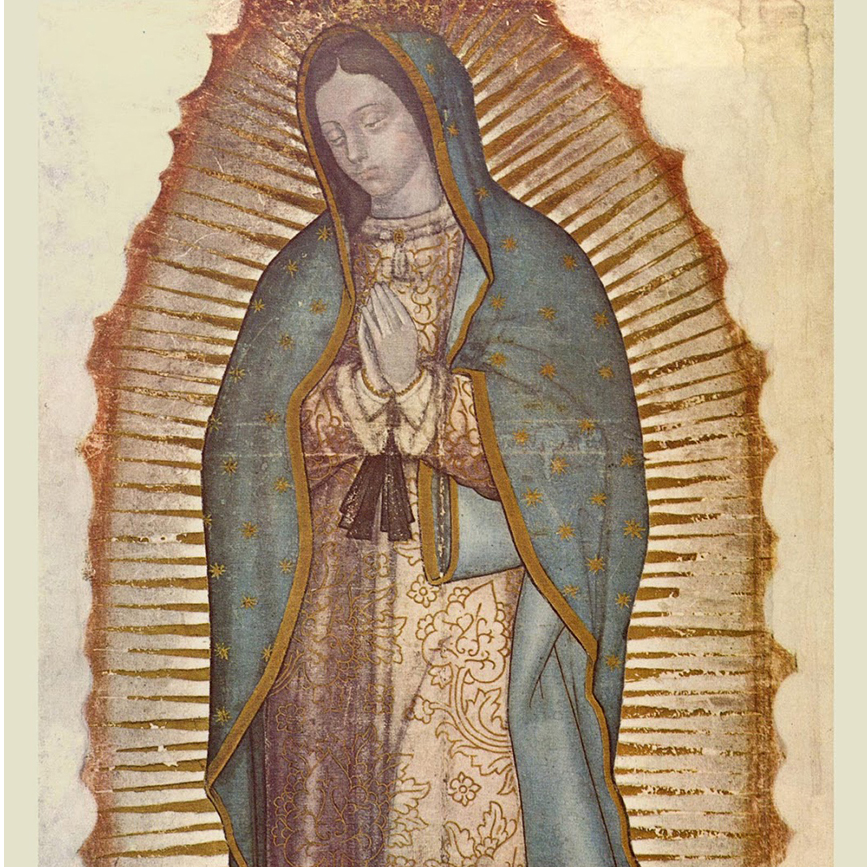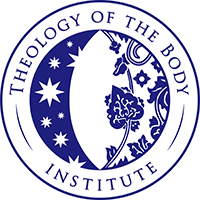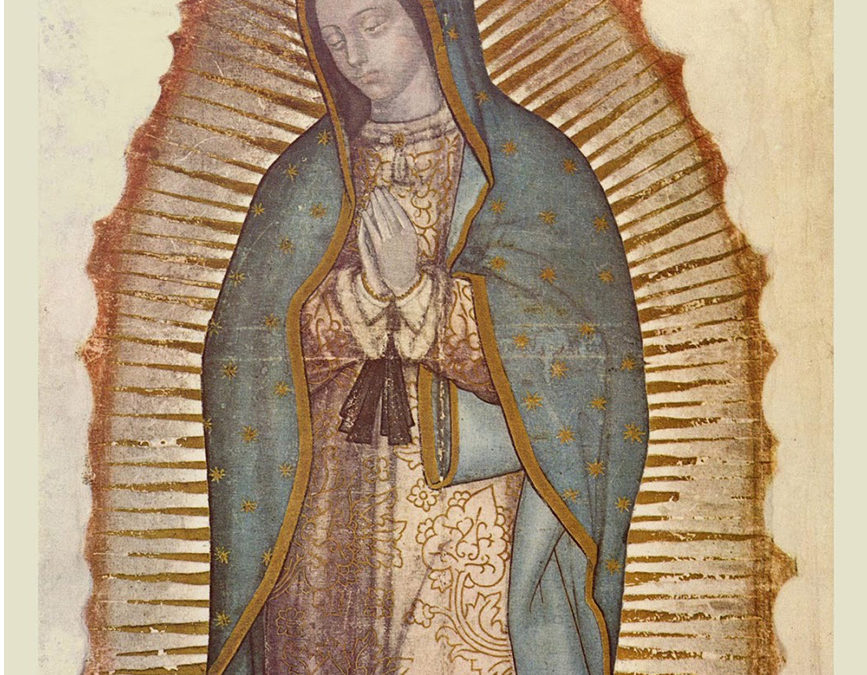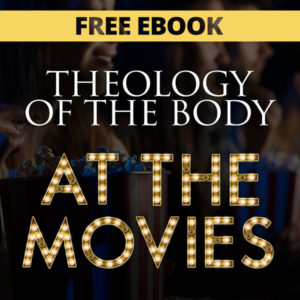

Do You Know the Secrets of the Tilma? Pondering the Deep Mysteries of Our Lady of Guadalupe on Her Feast Day
Do You Know the Secrets of the Tilma? Pondering the Deep Mysteries of Our Lady of Guadalupe on Her Feast Day

You’ve seen the miraculous image of Our Lady of Guadalupe countless times, I’m sure. But have you ever really seen it? Do you know how to read it? O the secrets it contains! (Hint: it reveals all the glory of the theology of our bodies…) And how fitting it is that we celebrate her feast during our Advent preparations for Christmas.
In 2016, my team and I were in Mexico City leading a pilgrimage to the Shrine of Our Lady of Guadalupe on her glorious feast. We returned again this October to celebrate the Feast of St. John Paul II, who declared Our Lady of Guadalupe “Star of the New Evangelization.”
Below are the notes of the talk I gave to the pilgrims who came with us on both pilgrimages. Specific information about the Tilma has been taken primarily from Our Lady of Guadalupe: Mother of the Civilization of Love by Carl Anderson and Monsignor Eduardo Chavez (OLG).
- A Culture of the Image
The mysterious image on the Tilma is a “codex” that, through the meaning of specific cultural symbols and cues, spoke directly to the hearts of the Aztec people.
1a. “In many ways, European culture could be understood as a ‘culture of the word,’ heavily influenced by its dependence on the written language. … Yet the missionaries in [Mexico] faced a people who were entirely different in this regard. Communicating and recording ancient truths through their pictographs, the Indians of the New World lived in … a ‘culture of the image.’ Today, we have seen a significant shift in our own culture from a culture of the word to a new and very different culture of the image.”
(OLG, p. 41)
By placing herself in front of the sun and standing in the center of the moon, the Woman of the Tilma places herself in the very origins of Mexican civilization (the word Mexico is derived from three native words meaning “in the naval/center of the moon”…).
- The Aztecs believed the shorter days of this time of year were a sign of the sun god losing in the cosmic battle.
- In 1531, Dec. 12 (the last of Mary’s appearances) was the day of the winter solstice on the Julian calendar. Mary’s appearance inaugurates the time of year when the days become longer increasingly conquering the darkness.
1b. “The solar bodies were objects of great importance and fear for the Aztecs, who associated the sun and the moon with gods and believed these gods to be in constant conflict with one another. Fearing that the sun would somehow perish in this cosmic battle, the Aztecs sustained their god with human sacrifices intended ultimately to achieve cosmological harmony and the preservation of life on earth. The Virgin’s image speaks specifically to this fear, wherein the sun and moon are shown no longer as gods but as objects under her governance.”
(OLG, p. 36)
The Aztecs depicted graphic images of the body and death (human sacrifice) in their art. The message of the Tilma proclaims that the ultimate meaning of the body is not death, but, in “nuptial union” with the divine, the body is destined to receive eternal life!
- The Aztec understanding of sexuality was intimately linked with the earth’s cycles of fertility, with the passing of seasons, of sowing seed and harvesting, and with the fertile relationship between sky and earth.
- The pregnant woman of the Tilma shows the true relationship between human fertility and the fruitfulness of the earth (Juan Diego discovered in the arid winter environment of Tepeyak hill “a garden brimming with dew-covered flowers of sweetest scent”).
- By revealing the fertile, spousal relationship between heaven and earth fulfilled in her, the Tilma thus proclaims the true theology of the body… (Juan Diego and his wife Maria Lucia were one of the first Catholic married couples of the New World.)
1c. “In her miraculous image, the Virgin borrows potentially good and fruitful elements from the Indian culture – those ‘seeds of the Word’ that, until unearthed, lie dormant in every civilization. In this way, she reaffirms these elements, while at the same time purifying them and bestowing upon them the fullness of Christ” (OLG, p. 40).
1d. “For us, the Virgin’s clasped hands immediately indicate prayer … But even more, for the Indians, her entire body would have indicated the Virgin was praying … In the image, the Virgin can be seen … in the dance-step position. This for the Indians was the highest form of prayer” (OLG, p. 37). The person who prays “seeks to enter into nuptial union with [the Lord]” (Pope Benedict XVI, Spirit of the Liturgy, p. 197).
- Reading the Tilma
“The flowers are more than flowers; they are symbols, words, and concepts … conveying in the Nahuatl language and culture of the Indians the most fundamental elements of the Christian message: the [spousal] relationship between God and man” (OLG, p. 45).
- Mary’s hairstyle conveys that she is a VIRGIN.
- The ribbon over her womb conveys that she is PREGNANT.
- The four-petaled flower over her womb (jasmine) was the Aztec symbol for the DEITY.
- The teal color of her mantle symbolizes HEAVEN.
- The pink color of her tunic symbolizes EARTH.
- The eagle-angel holding both her mantle and tunic indicate that HEAVEN and EARTH are UNITED IN HER.
- Her skin color indicates that she is a MESTIZA (a mixed race woman: part Aztec and part Spanish)
- The eight-petaled flower symbolizes the planet VENUS, known to the Aztecs as the “morning star” and to Europeans as the Roman goddess of love, beauty, and sexuality (its symbol is also the symbol for “female”). The Woman of the Tilma appears as the Morning Star who redeems human love, beauty, and sexuality by opening it to the divine…
- The large flower cluster resembles the Aztec glyph for HILL or MOUNTAIN, which was associated with the sacred temple at the center of Aztec civilization.
- The curving stem corresponds to the Aztec glyph for RIVER which represented life itself (also the idea of life-givingness/fatherhood).
- When combined, these glyphs represent the idea of communal living (communion) ranging in meaning from a small village of families to the larger national concept of CIVILIZATION itself.
Together, the flower cluster and stem reveal the key to building a civilization of love and a culture of life: human beings flourish in as much as they open themselves like this Virgin Bride to divine love and life…
- Notice the large flower also resembles a smiling face.
- And when turned upside down (glyphs were meant to be read from various angles), the flower and stem resemble a heart with arteries “plugged in” to the heavens, to the divine source of love and life.
2a. “Unlike the Aztecs’ own ritual sacrifices, this sacrificial heart is shown to be a divine heart, a heart through which divine blood flows, indicating the sacrifice and thus love of God. With the heart’s artery attached to the Virgin’s celestial mantle, God is shown as the true giver of life. Rather than being sustained by the Aztecs’ ritual sacrifice, he is shown as the one who sustains his creation through the gift of his own divine life-giving blood.”
(OLG, p. 53)
Notice also that there is one of these flower clusters right behind Mary’s clasped hands (above her own heart) and just below the cross around her neck.
2b. “Our elders offered hearts to God [in bloody sacrifices] that there may be harmony in life. This Lady says that, without tearing them out, we should place them in her hands so that she may then present them to the true God.”
(from the oral tradition of the Indians, see OLG, p. 55)
- We Must Become a Codex of Love
The essential message of Our Lady of Guadalupe to Juan Diego (and all of us) is a call to conversion; a call to “untwist” what sin has twisted in us so that we can live the truth of our humanity through the truth about love, life, and the body.
3a. “OLG’s only words of spiritual guidance are her gentle but persistent reminders to Juan Diego about love: a love that can be trusted, a love that gives dignity, a love that is personal … The Guadalupan message … is an education in love … For this reason, like John Paul II, we think that one of the greatest influences of OLG upon the history of the Western Hemisphere may still be before us” (OLG, p. xvi).
3b. “This universal message [found in the Tilma] speaks to our basic human desire for God; it is God’s promise to us, made through his mother, that we are never left without help. And like any promise, it always has two sides: God promises to help us, which at the same time requires that we let him. Love – even God’s love – always seeks to be returned. This is the proper relationship between God and his people” (OLG, p. 56).
3c. “The entire story of Guadalupe is one of transformation: from a continent of blood-letting and human sacrifice, to a continent [that saw nine million baptisms in fifteen years] … It falls to us to continue this sequence of conversions and through our own conversion of self to become the codex that can bring conversion to those around us by our witness” (OLG, p. 111).
Question: What strikes you most about the hidden secrets of the Tilma? For a more in-depth look, watch my mini-course on the Tilma here. Please share on this article’s Facebook and Twitter posts.




